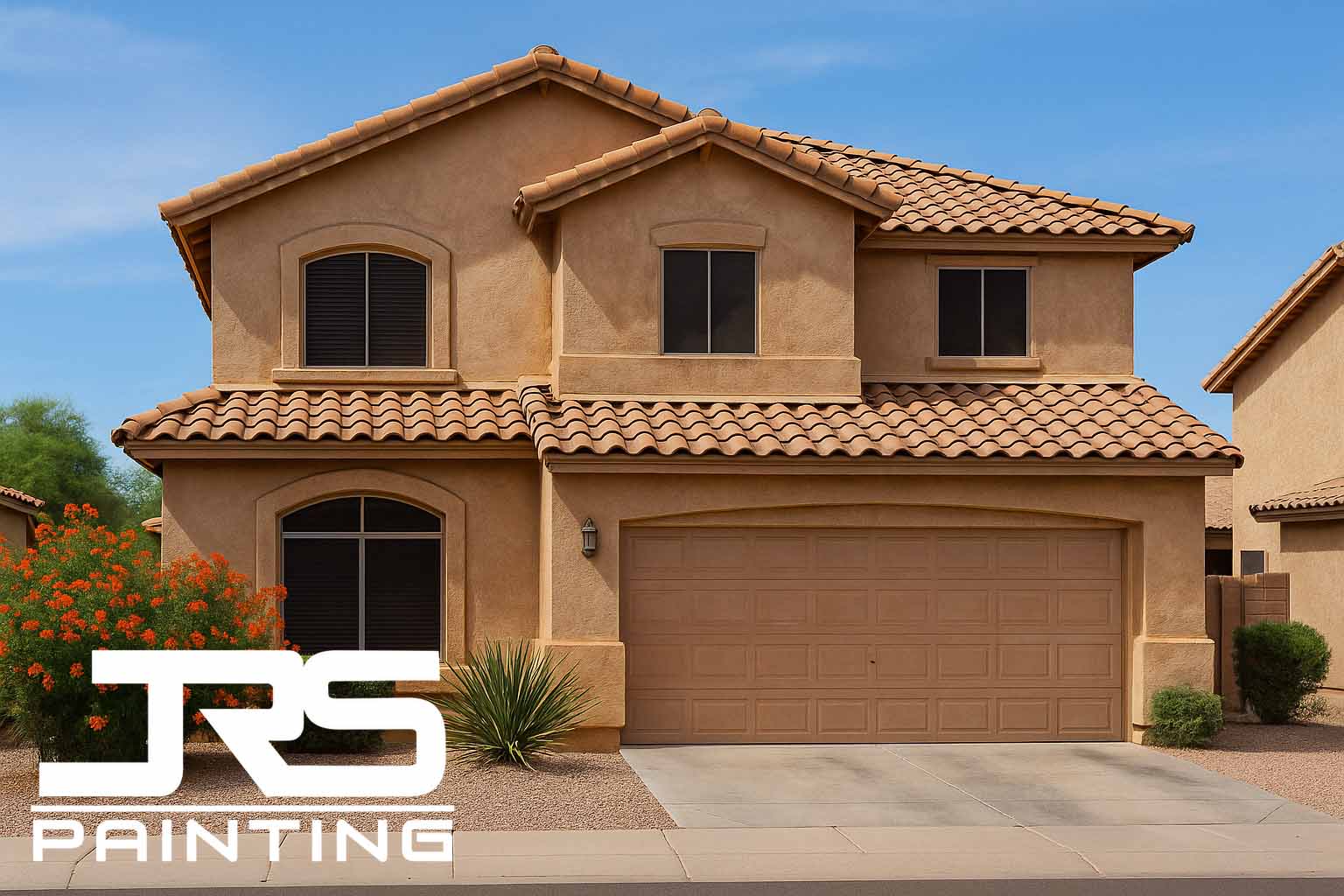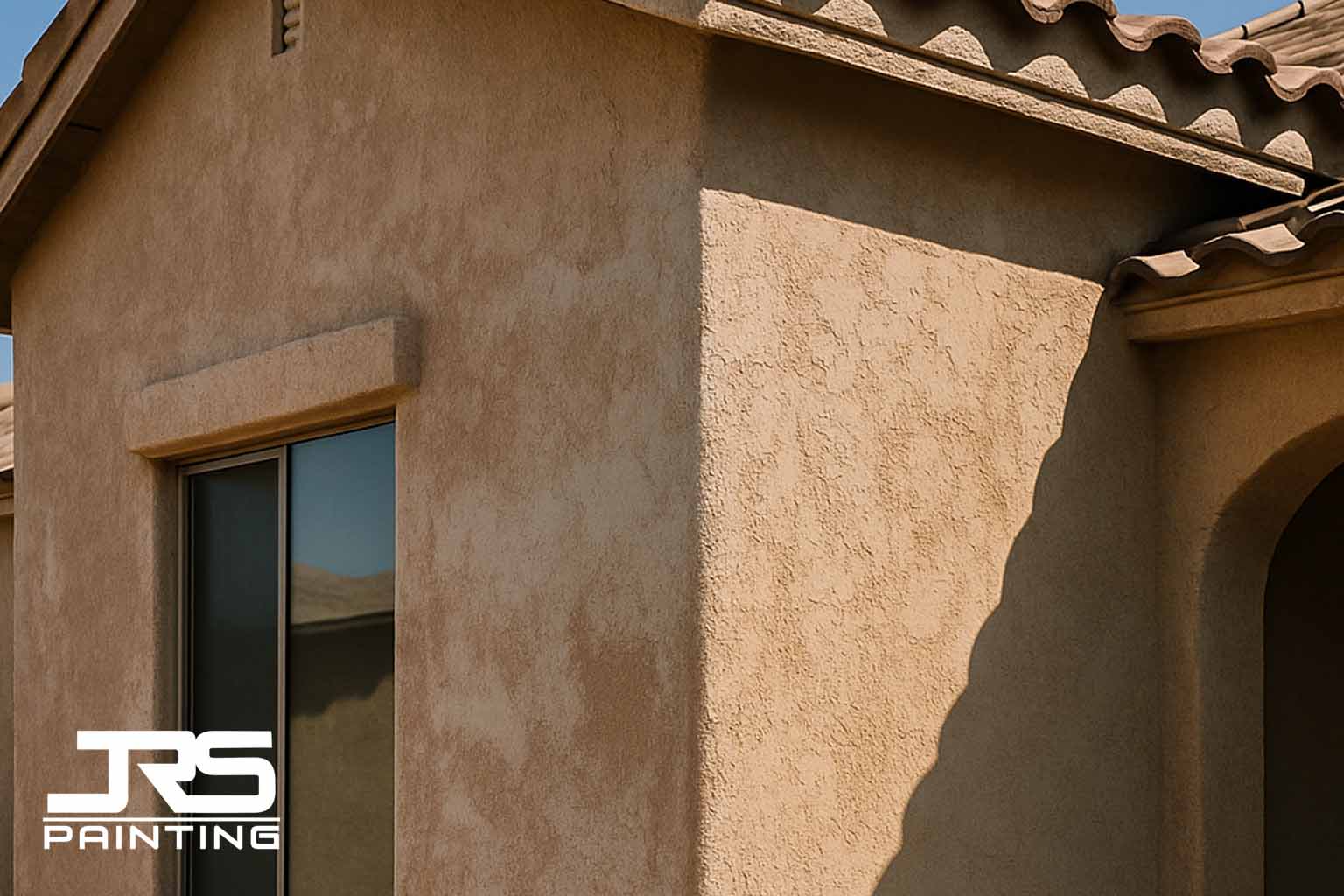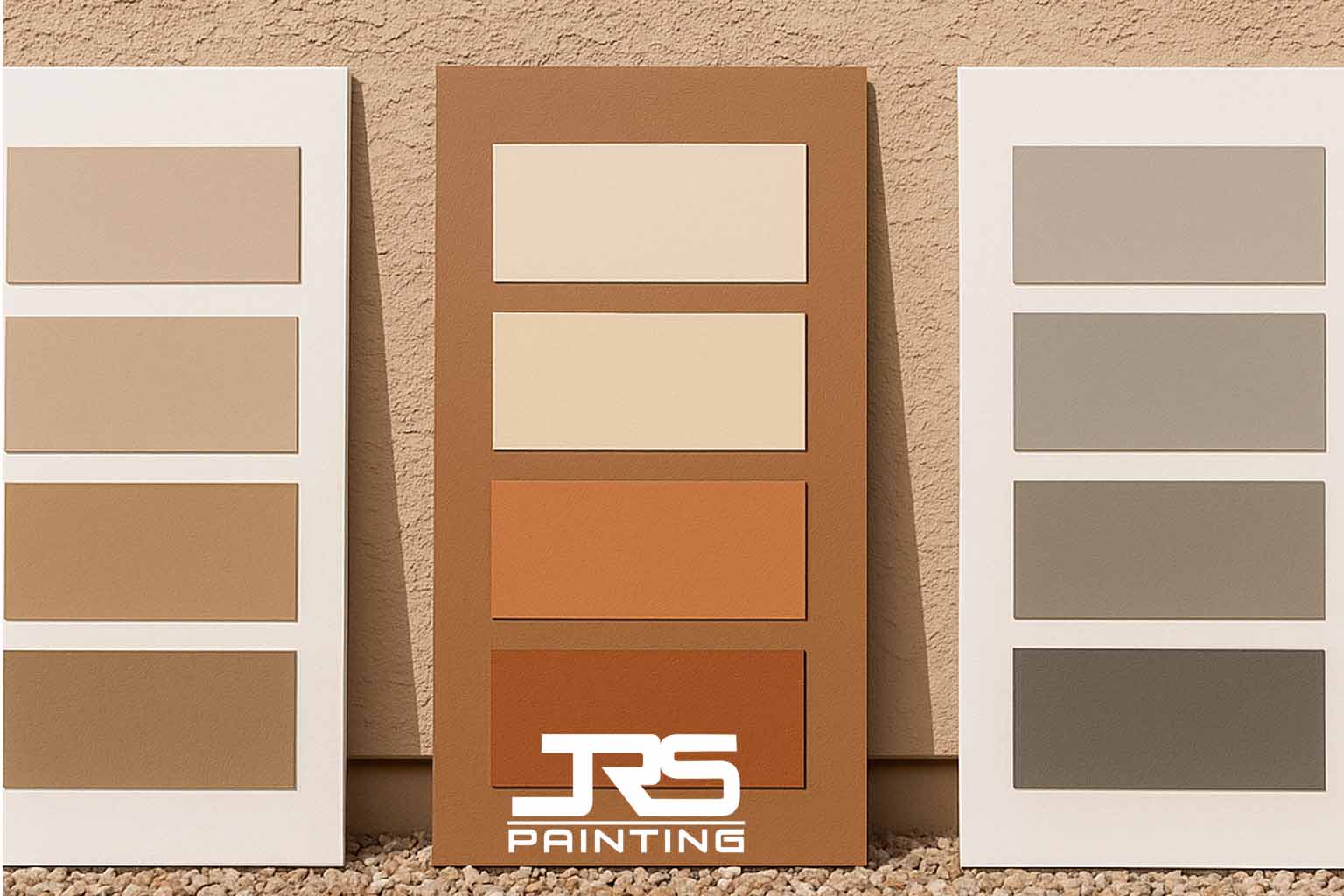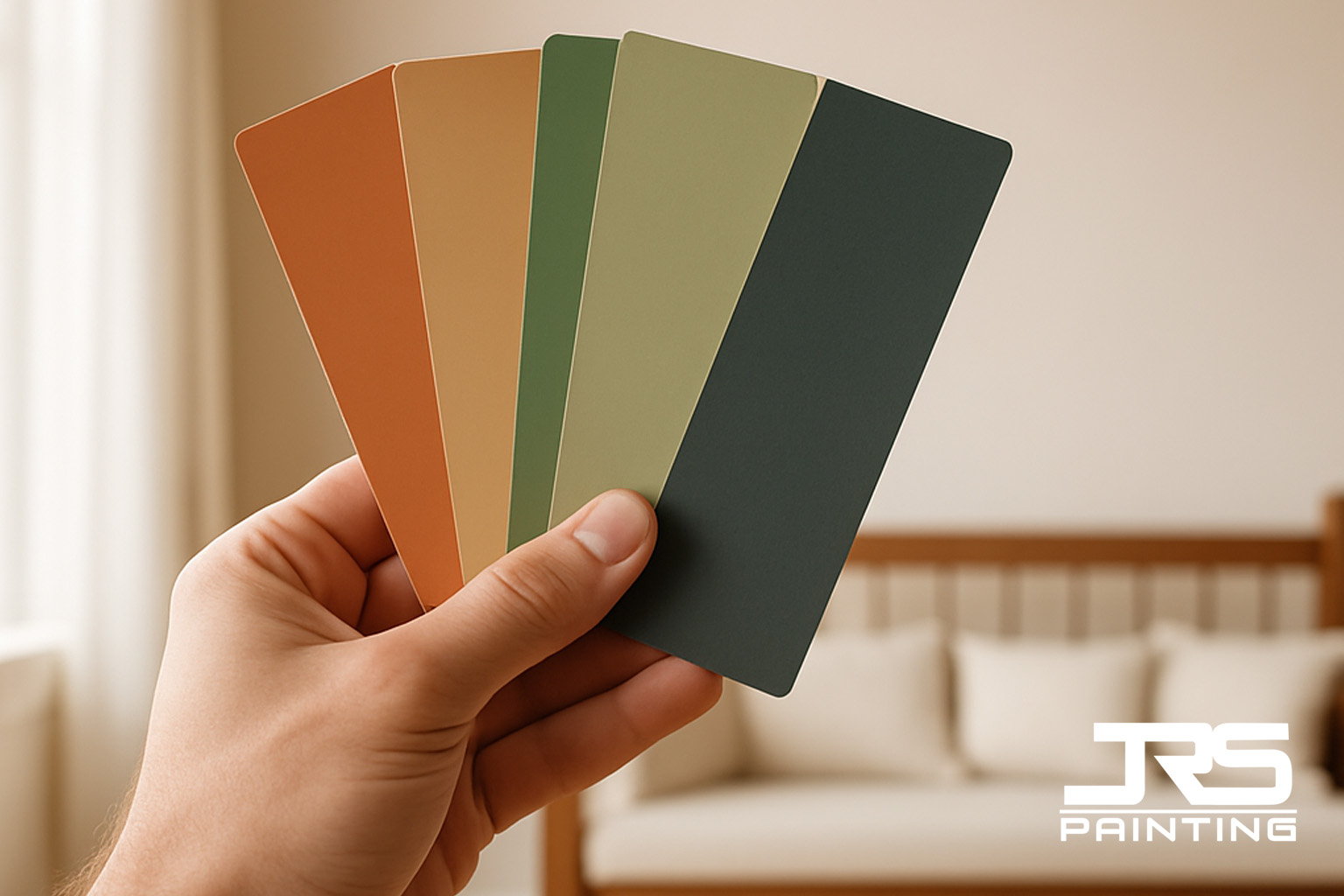
Living in Phoenix means dealing with one of the harshest climates in the country for exterior paint. The intense desert sun, extreme weather conditions, and low humidity create perfect conditions for paint fading. Understanding how to prevent exterior paint fading is essential for maintaining your home's beauty and protecting your investment in Arizona's challenging desert climate.
Did you know? Phoenix receives over 300 days of sunlight annually, with ultraviolet radiation levels that can cause exterior paint to fade up to 40% faster than in other climates. The good news? With the right information and approach, you can significantly extend your paint's longevity.
Understanding Why Exterior Paint Fades in Phoenix
Paint fading occurs when UV rays break down the chemical bonds in paint pigments. In Phoenix's desert climate, several factors accelerate this process and contribute to wear and tear:
Primary Causes of Paint Fading
Intense Ultraviolet Radiation: Phoenix's high elevation and clear skies mean stronger UV exposure. The sun's radiation penetrates paint films, causing color molecules to break down and fade over time, particularly affecting surfaces without proper UV protection.
Extreme Temperature Fluctuations: Daily temperature swings of 30-40 degrees cause paint to expand and contract repeatedly, creating microscopic cracks that allow ultraviolet rays to penetrate deeper and accelerate deterioration.
Low Humidity and Dry Air: The desert's dry air causes paint to lose moisture rapidly, making it more brittle and susceptible to cracking and chalk formation on exterior surfaces.
Dust and Sandstorms: Phoenix's frequent dust storms create abrasive conditions that can wear away paint surfaces, exposing underlying layers to UV damage and reducing the efficiency of protective coatings.
Pollution and Environmental Contaminants: Urban pollution combined with dirt accumulation can create chemical reactions that break down paint bonds and contribute to premature fading and water damage.
How to Prevent Exterior Paint Fading: Professional Strategies
Preventing paint fade in Arizona requires a comprehensive approach that addresses the unique challenges of desert climate painting. Here are the most effective strategies to protect your home:
Choose High-Quality Paint
Invest in premium paints with advanced UV protection and high reflectance properties. Look for paints specifically formulated for extreme weather with high concentrations of titanium dioxide and ceramic additives that resist heat and ultraviolet damage.
Select Fade-Resistant Colors
Lighter colors like beige, whites, and earth tones reflect heat and UV rays better than dark colors. These shades maintain their integrity longer in Arizona's intense sunlight and provide better efficiency in temperature control.
Proper Surface Preparation
Thorough cleaning, sanding, and priming create a strong foundation that helps paint adhesion and resist environmental damage longer. Remove all dirt, chalk, and loose material before applying primer.
Apply Multiple Coats
Two coats of high-quality paint provide better protection than a single thick coat. The additional layer creates a stronger barrier against UV rays and improves overall longevity.
Advanced Protection Techniques
Timing Your Paint Project
The best time to paint in Phoenix is during the cooler months (October through March) when temperatures are more moderate. Avoid painting during Phoenix summer when temperatures exceed 100°F, as excessive heat can cause paint to dry too quickly and not adhere properly. Consider monsoon season timing to avoid rain interference.
Specialized Coating Systems
Consider elastomeric coatings for maximum protection against extreme weather. These thick, flexible coatings expand and contract with temperature changes while providing superior ultraviolet resistance. They're particularly effective on stucco and masonry surfaces common in Phoenix homes, preventing water damage and mildew formation.
Regular Maintenance Schedule
Implementing a regular maintenance schedule is crucial for preventing paint fading and wear and tear. Inspect your exterior paint annually for signs of chalking, cracking, blisters, or color loss. Use proper caulk around windows and doors to prevent moisture intrusion.
Pro Tip: South and west-facing walls receive the most intense UV exposure in Arizona. These areas may need touch-ups or repainting more frequently than north and east-facing surfaces due to increased heat and radiation exposure.
Choosing the Right Paint for Phoenix Climate
Not all paints are created equal when it comes to Phoenix's extreme weather conditions. Here's what to look for to protect your home:
Premium Acrylic Paint
High-quality 100% acrylic paint offers the best combination of durability, color retention, and flexibility for Phoenix homes. These formulations resist cracking, maintain adhesion, and protect against moisture while providing excellent longevity in desert conditions.
Ceramic and Nano-Technology Additives
Modern paints with ceramic microspheres or nano-technology additives provide enhanced heat reflection and ultraviolet protection. These advanced formulations can reduce surface temperatures by 10-20 degrees and improve overall efficiency.
Infrared-Reflective Pigments
Paints containing infrared-reflective pigments help maintain color integrity while reducing heat absorption and improving reflectance. This technology is especially beneficial for darker colors that traditionally fade quickly in Arizona's intense sunlight.
Professional Application Makes the Difference
While choosing the right paint is important, proper application is equally crucial for preventing fade and ensuring longevity. Professional painters understand the nuances of working in Phoenix's climate and can ensure optimal results with proper brush techniques and application methods.
Professional application includes proper surface preparation, correct paint mixing, appropriate primer application, and quality control measures that aren't always possible with DIY projects. This includes proper caulk application and sealant placement to prevent water damage.
Protecting Different Exterior Surfaces
Stucco Surfaces
Stucco is common in Phoenix homes and requires special attention. Use breathable paints that allow moisture to escape while preventing water damage. Apply primer specifically designed for masonry surfaces to ensure proper adhesion and prevent mildew growth.
Wood Elements
Wood trim, doors, and siding need extra protection from heat and ultraviolet exposure. Use high-quality primer and multiple coats of acrylic paint with UV inhibitors. Regular maintenance including caulk replacement helps prevent moisture infiltration.
Metal Components
Metal surfaces can reach extreme temperatures in Arizona's heat. Use specialized metal primers and paints with high reflectance to reduce temperature buildup and prevent thermal expansion damage.
Long-Term Benefits of Fade Prevention
Investing in fade prevention strategies provides numerous long-term benefits beyond just maintaining your home's appearance. Properly protected paint lasts 50-75% longer than standard applications, reducing the frequency of repainting projects and providing better efficiency in maintenance costs.
Additionally, fade-resistant paint helps maintain your home's curb appeal and property value. In Phoenix's competitive real estate market, a well-maintained exterior can significantly impact your home's marketability, especially when protected against desert climate challenges.
Quality paint systems also provide better protection against water damage, mildew formation, and wear and tear from dust and pollution, ensuring your investment maintains its protective properties longer.
When to Call the Professionals
While some homeowners attempt DIY painting projects, Phoenix's challenging climate makes professional application especially valuable. Experienced painters understand local conditions and have access to commercial-grade products including specialized primers, sealants, and protective coatings not available to consumers.
Consider professional services when dealing with multi-story homes, specialty surfaces like stucco or tile, or when you want the longest-lasting results possible. Professionals also typically offer warranty protection on their work, providing peace of mind in Arizona's harsh conditions.
Frequently Asked Questions
Ready to Protect Your Phoenix Home?
Don't let the desert sun and extreme weather fade your home's beauty. Our expert team at JRs Painting specializes in fade-resistant exterior painting solutions designed specifically for Arizona's challenging desert climate. We use premium acrylic paint, proper primer application, and professional techniques to ensure maximum longevity and protection against heat, ultraviolet radiation, and wear and tear. Contact us today for your free estimate and professional exterior painting services to protect your home in Phoenix.
Related Articles
Exterior Painting, Residential Painting







